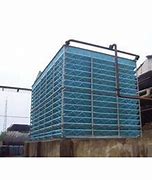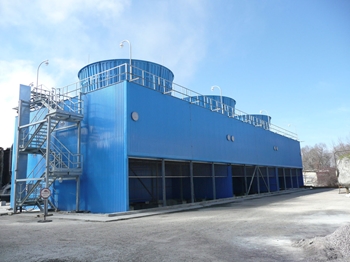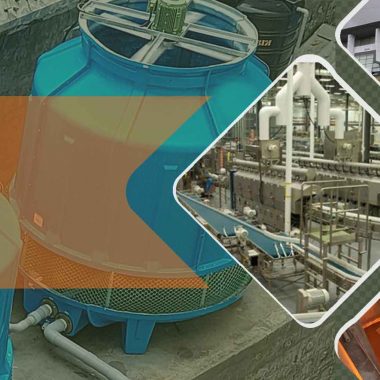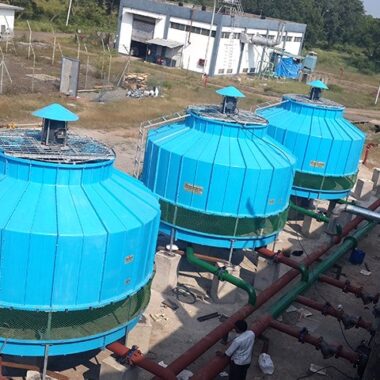A Breakdown of the Cooling Process
A Breakdown of the Cooling Process
Round cooling towers work based on the principles of evaporative cooling, where heat is removed from a process fluid (such as water or refrigerant) through the evaporation of a portion of the water in contact with surrounding air. Here’s a breakdown of the cooling prepare in round cooling towers:
1) Water Circulation:
- The cooling handle begins with the circulation of warm water from mechanical processes or HVAC systems through the cooling tower system. This warm water enters the tower basin found at the base of the cooling tower structure.
2) Distribution System:
- Inside the cooling tower, the warm water is equally distributed over the surface of the fill media through a conveyance system. The fill media comprises of a arrangement of vertically organized sheets or modules designed to maximize the surface area available for water-air contact.
3) Airflow:
- Simultaneously, ambient air is drawn into the cooling tower through the tower’s inlet louvers by one or more fans mounted at the top of the tower. As the air passes through the fill media, it comes into contact with the thin film of warm water flowing over the media’s surface.
4) Evaporation:
- The warm water in contact with the fill media absorbs heat from the air, causing a parcel of the water to evaporate. This vanishing handle extracts latent heat from the remaining water, lowering its temperature significantly.
5) Heat Transfer:
- As the water evaporates, it discharges heat energy into the surrounding discuss, cooling both the water and the air. The cooled water then collects within the tower basin at the bottom of the cooling tower, prepared to be recirculated back to the method hardware for assist cooling.
6) Exhaust:
- The cooled air, presently laden with moisture from the evaporation process, exits the cooling tower through the tower’s outlet or exhaust louvers. A few cooling towers are prepared with drift eliminators to capture water droplets entrained within the exhaust air, minimizing water loss and avoiding environmental contamination.
7) Makeup Water:
- To compensate for water lost through evaporation and drift, makeup water is included to the cooling tower system as required to preserve the required water level within the tower bowl. Makeup water may moreover undergo treatment to control water quality and avoid scale, erosion, or organic fouling.
8) Cycle of Operation:
- The cooling tower proceeds to function in a continuous cycle, with warm water entering the tower, experiencing dissipation and heat exchange within the fill media, and exiting as cooled water. The method repeats as long as there’s a demand for cooling from the process equipment.
Overall, round cooling towers give efficient and successful cooling by saddling the natural prepare of evaporation to evacuate heat from industrial processes and HVAC systems. By optimizing airflow, water dispersion, and dissipation rates, round cooling towers play a basic part in maintaining optimal operating temperatures and enhancing the efficiency of different industrial processes and applications.





